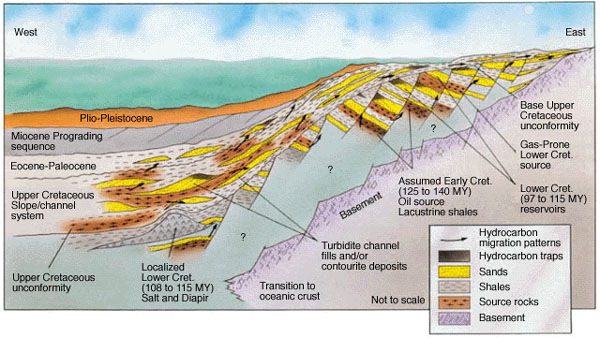1. n. [Geology]
A diagram of a vertical section through a volume, as opposed to the surface, "bird's eye," or plan view of a map. Cross sections are useful for displaying the types and orientations of subsurface structures and formations.
See related terms: fence diagram, lithostratigraphy

2. n. [Formation Evaluation]
Constant of proportionality relating the fraction of incident particles that undergo an interaction to the thickness and number of target atoms within a material, and the incident flux. It is a measure of the probability of an interaction. The microscopic cross section has units of area per interacting atom. The macroscopic cross section, which is the product of the microscopic cross section and the number of particles per unit volume, has units of inverse length. Cross sections for most reactions are determined experimentally and depend on the type of interaction, the material and the energy of the incident particle.
See related terms: Compton scattering, pair production, photoelectric effect